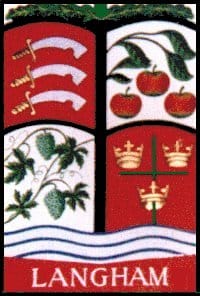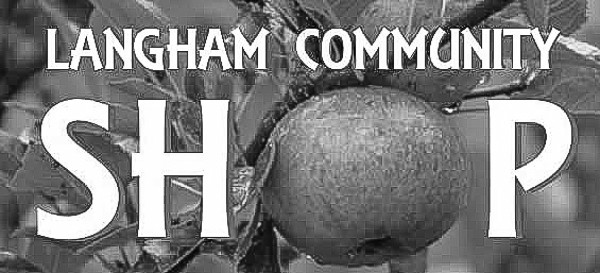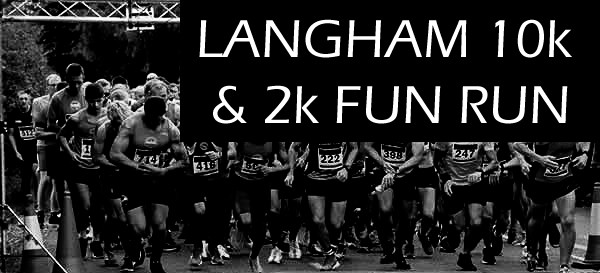PRE-20th CENTURY HISTORY
Cropmarks in north Langham show many circular patterns which are 4000 year old burial mounds and so the area near the river was certainly occupied at that time. 2000 years later the Romans built a villa close to the River Stour and the Roman Road from Colchester into Suffolk also ran to the east of the village and so there was Roman activity in the area of the village.
The Saxons later established a settlement which was called Laingaham, the spelling in the Domesday Book. The Domesday Book shows a small agricultural community with the manor held by Walter Tirel, the man who was accused of shooting King William Rufus while hunting for deer in the New Forest.
Langham, like most villages, was primarily agricultural until the 20th century, with a few large farms and many small holdings. Like the other villages in the Stour Valley it enjoyed a period of great prosperity due to the cloth trade. Langham had one of the earliest recorded fulling mills, active in 1273. The cloth trade activity lasted until the 17th century. (From records of the tax subsidies during the 1520s eight of the wealthiest places in England were within a couple of miles of the Stour and so they were all wealthier than, for example Sheffield or Derby.) In common with the other villages, Langham has a number of houses dating from the time of the cloth trade which are timber framed and mostly thatched and then comparatively few built in the period of austerity which followed its collapse. Up to the start of the 20th century Langham would have been a reasonably self contained community and everyday items could have been bought at the village stores or from the variety of shops in Dedham. However, the Essex Great Road from London to Norwich via Colchester, later known as the A12, ran up its east side and after the growth of the coaching routes in the 18th century it would have been possible to go to Colchester, Ipswich or even London!
A small village, self-contained but not remote, engaged for the most part in agriculture that was Langham in 1900. At the turn of the century the population was 560, the vast majority of the men worked in the immediate locality and few people would ever have travelled more than twenty miles from the village.
The principal landowner was the squire, Mr William Nocton, but throughout the village many yeoman farmers, working small farms, employed workers who lived in tied cottages, i.e. dwellings linked to their employment.
The roads were rough and stony. Some women earned a little money stone-picking from nearby fields and these stones were then used by road-menders to fill in the hollows in the roads caused by the heavy, horse-drawn vehicles.
The Saxons later established a settlement which was called Laingaham, the spelling in the Domesday Book. The Domesday Book shows a small agricultural community with the manor held by Walter Tirel, the man who was accused of shooting King William Rufus while hunting for deer in the New Forest.
Langham, like most villages, was primarily agricultural until the 20th century, with a few large farms and many small holdings. Like the other villages in the Stour Valley it enjoyed a period of great prosperity due to the cloth trade. Langham had one of the earliest recorded fulling mills, active in 1273. The cloth trade activity lasted until the 17th century. (From records of the tax subsidies during the 1520s eight of the wealthiest places in England were within a couple of miles of the Stour and so they were all wealthier than, for example Sheffield or Derby.) In common with the other villages, Langham has a number of houses dating from the time of the cloth trade which are timber framed and mostly thatched and then comparatively few built in the period of austerity which followed its collapse. Up to the start of the 20th century Langham would have been a reasonably self contained community and everyday items could have been bought at the village stores or from the variety of shops in Dedham. However, the Essex Great Road from London to Norwich via Colchester, later known as the A12, ran up its east side and after the growth of the coaching routes in the 18th century it would have been possible to go to Colchester, Ipswich or even London!
A small village, self-contained but not remote, engaged for the most part in agriculture that was Langham in 1900. At the turn of the century the population was 560, the vast majority of the men worked in the immediate locality and few people would ever have travelled more than twenty miles from the village.
The principal landowner was the squire, Mr William Nocton, but throughout the village many yeoman farmers, working small farms, employed workers who lived in tied cottages, i.e. dwellings linked to their employment.
The roads were rough and stony. Some women earned a little money stone-picking from nearby fields and these stones were then used by road-menders to fill in the hollows in the roads caused by the heavy, horse-drawn vehicles.








